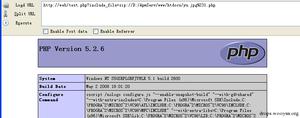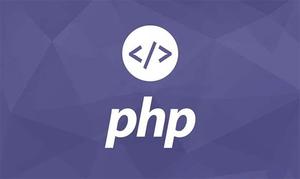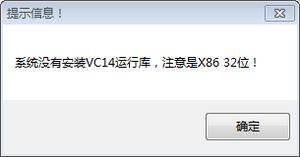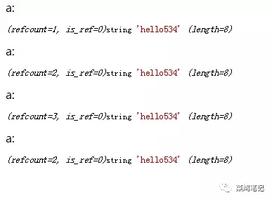在PHP中使用位掩码进行设置?
位和位掩码是我一直在努力理解的东西,但是我想学习如何在PHP中使用它们进行设置和类似操作。
我终于找到了一个声称完全可以做到这一点的类,而且据我所知,它似乎可以工作,但是我不确定这是否是实现此目的的最佳方法。我将使用下面的示例代码发布类文件,以按工作顺序显示它。
如果您有经验,请告诉我是否可以改进,性能或其他方面。我真的很想学习这一点,而且我一直在阅读它,但是到目前为止,这对我来说很难理解。
班级…
<?php class bitmask
{
/**
* This array is used to represent the users permission in usable format.
*
* You can change remove or add valuesto suit your needs.
* Just ensure that each element defaults to false. Once you have started storing
* users permsisions a change to the order of this array will cause the
* permissions to be incorectly interpreted.
*
* @type Associtive array
*/
public $permissions = array(
"read" => false,
"write" => false,
"delete" => false,
"change_permissions" => false,
"admin" => false
);
/**
* This function will use an integer bitmask (as created by toBitmask())
* to populate the class vaiable
* $this->permissions with the users permissions as boolean values.
* @param int $bitmask an integer representation of the users permisions.
* This integer is created by toBitmask();
*
* @return an associatve array with the users permissions.
*/
public function getPermissions($bitMask = 0)
{
$i = 0;
foreach ($this->permissions as $key => $value)
{
$this->permissions[$key] = (($bitMask & pow(2, $i)) != 0) ? true : false;
// Uncomment the next line if you would like to see what is happening.
//echo $key . " i= ".strval($i)." power=" . strval(pow(2,$i)). "bitwise & = " . strval($bitMask & pow(2,$i))."<br>";
$i++;
}
return $this->permissions;
}
/**
* This function will create and return and integer bitmask based on the permission values set in
* the class variable $permissions. To use you would want to set the fields in $permissions to true for the permissions you want to grant.
* Then call toBitmask() and store the integer value. Later you can pass that integer into getPermissions() to convert it back to an assoicative
* array.
*
* @return int an integer bitmask represeting the users permission set.
*/
function toBitmask()
{
$bitmask = 0;
$i = 0;
foreach ($this->permissions as $key => $value)
{
if ($value)
{
$bitmask += pow(2, $i);
}
$i++;
}
return $bitmask;
}
}
?>
如何将权限设置/保存为位掩码值?
<?php /**
* Example usage
* initiate new bitmask object
*/
$perms = new bitmask();
/**
* How to set permissions for a user
*/
$perms->permissions["read"] = true;
$perms->permissions["write"] = true;
$perms->permissions["delete"] = true;
$perms->permissions["change_permissions"] = true;
$perms->permissions["admin"] = false;
// Converts to bitmask value to store in database or wherever
$bitmask = $perms->toBitmask(); //in this example it is 15
$sql = "insert into user_permissions (userid,permission) values(1,$bitmask)";
echo $sql; //you would then execute code to insert your sql.
?>
取得位掩码值并基于位值为每个数组项返回true / false的示例。
<?php /**
* Example usage to get the bitmask value from database or session/cache.... then put it to use.
* $permarr returns an array with true/false for each array value based on the bit value
*/
$permarr = $perms->getPermissions($bitmask);
if ($permarr["read"])
{
echo 'user can read: <font color="green">TRUE</font>';
}
else {
echo 'user can read: <font color="red">FALSE</font>';
}
//user can WRITE permission
if ($permarr["write"])
{
echo '<br>user can write: <font color="green">TRUE</font>';
}
else {
echo '<br>user can write: <font color="red">FALSE</font>';
}
?>
回答:
通常,位字段是一种非常方便有效的工具,用于处理标志或任何布尔值集。
要了解它们,您首先需要知道二进制数是如何工作的。之后,您应该查看按位运算符的手动输入,并确保您知道按位AND,OR和左/右移位的工作方式。
位域不过是一个整数值。假设我们的位字段的大小是固定的,只有一个字节。计算机使用二进制数字工作,因此,如果我们的数字值为29,您实际上会0001
1101在内存中找到。
使用按位AND(&)和按位OR(|),您可以读出并分别设置数字的每一位。它们都接受两个整数作为输入,并分别对每个位执行AND / OR。
要读出号码的第一位,可以执行以下操作:
0001 1101 (=29, our number)& 0000 0001 (=1, bit mask)
= 0000 0001 (=1, result)
如您所见,您需要一个特殊的数字,即仅设置我们感兴趣的位,即所谓的“位掩码”。在我们的情况下是1。要读出第二位,我们必须将位掩码中的一位“推”到左边一位。我们可以使用左移运算符($number
<< 1)或乘以2来实现。
0001 1101& 0000 0010
= 0000 0000 (=0, result)
您可以在我们的电话号码中做到这一点。我们的数字与位掩码的二进制与结果要么为零(表示未“置位”),要么为非零整数(即该位已置位)。
如果要设置一位,则可以使用按位或:
0001 1101| 0010 0000 (=32, bit mask)
= 0011 1101 (=29+32)
但是,当您想“清除”一点时,就必须走另一条路。
更一般的方法是:
// To get bit n$bit_n = ($number & (1 << $n)) != 0
// Alternative
$bit_n = ($number & (1 << $n)) >> $n
// Set bit n of number to new_bit
$number = ($number & ~(1 << $n)) | ($new_bit << $n)
乍一看,它看起来有些神秘,但实际上很简单。
到现在为止,您可能已经发现位字段是一种很底层的技术。这就是为什么我建议不要在PHP或数据库中使用它们。如果您想要一堆标志可能没问题,但是对于其他任何事情,您实际上都不需要它们。
您发布的课程对我来说有点特殊。例如,类似... ? true :
false的事情非常糟糕。如果要使用位字段,最好定义一些常量并使用上述方法。上一堂简单的课并不难。
define('PERM_READ', 0);define('PERM_WRITE', 1);
class BitField {
private $value;
public function __construct($value=0) {
$this->value = $value;
}
public function getValue() {
return $this->value;
}
public function get($n) {
return ($this->value & (1 << $n)) != 0;
}
public function set($n, $new=true) {
$this->value = ($this->value & ~(1 << $n)) | ($new << $n);
}
public function clear($n) {
$this->set($n, false);
}
}
$bf = new BitField($user->permissions);
if ($bf->get(PERM_READ)) {
// can read
}
$bf->set(PERM_WRITE, true);
$user->permissions = $bf->getValue();
$user->save();
我没有尝试此答案的任何代码,但是即使它开箱即用,它也应该使您入门。
请注意,每个位字段限制为32个值。
以上是 在PHP中使用位掩码进行设置? 的全部内容, 来源链接: utcz.com/qa/412201.html









